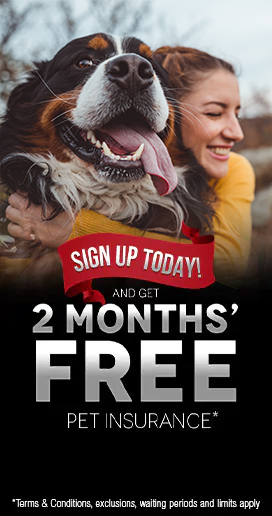
Pet Insurance Australia Urges Safe, Restrained Travel for All Pets
Australia – [July, 2025] – As the weather warms and many dream of a road adventure with their pet, Pet Insurance Australia (PIA) reminds Australian pet owners of the serious risks of travelling with unrestrained pets and urges them to always secure dogs in the back seat with proper restraints.
“After the recent news article highlighting the risk of fines for breaking the laws regarding how pets are allowed to travel in vehicles, PIA is urging all Australians to consider how their pets travel in vehicles seriously,” Nadia Crighton from Pet Insurance Australia says. “Even a short trip to the dog park can end tragically if you choose not to restrain them correctly. Your canine companion’s safety should be paramount every time they hop in the car.”
According to the RSPCA, 5,000 dogs are injured or killed each year after jumping from moving cars, and 500 dogs suffer serious harm or death when they fall from the back of utes annually. In addition, an unrestrained dog can distract the driver or become a deadly projectile during sudden braking or a collision.
“Statistics show thousands of dogs are seriously injured in car accidents each year,” Nadia Crighton from Pet Insurance Australia says. “In a standard vehicle, using a restraint that connects directly to your car’s seatbelt system is one of the most effective ways to keep your dog secure during travel.”
These restraints typically attach to a dog’s harness or collar. Without proper restraint, dogs can easily become a dangerous distraction or be ejected from their seat or even from the vehicle during sudden stops or collisions.
Securing your dog in the car offers multiple safety advantages for both pets and passengers:
- It prevents your dog from roaming freely inside the car, reducing the risk of distraction while driving.
- In the event of a crash, a restrained dog is less likely to become a flying object, helping protect everyone in the vehicle.
- It helps stop your dog from leaping out of open windows, lowering the chance of injury or incidents on the road.
“Each year, many dogs are seriously injured or killed after falling or jumping from the back of moving vehicles when left unsecured,” Crighton warns. “Escaped dogs are often panicked and confused, which can put them, and other road users, at serious risk.”
Traumatic injuries caused by car accidents and unrestrained dogs can be incredibly distressing for owners and pets. Then there’s the risk of fines, as well as veterinary costs for treatment.
“The types of traumatic injuries caused by car crashes can come at a huge cost. The PIA portfolio has seen trauma treatment claims up to $16,000 in the last two years,” Crighton says. “Securing your dog in a crash-tested harness or crate keeps them safe and lets you focus on driving, ultimately protecting all lives inside the car.”
State-by-State Rules: Driving with Dogs in Australia
Most Australian pet owners may be unaware that where and how their dog sits in the car could result in fines of hundreds, or even thousands, of dollars, depending on their state or territory.
While rules differ across the country, there are consistent themes*:
- It’s illegal Australia-wide to drive with a dog in your lap. Fines range from $150 (NT) to $562 (NSW).
- Dogs must be safely restrained if travelling in the tray of a ute or trailer—usually by a harness, leash, or enclosed crate.
- In NSW, dogs can sit in the passenger seat as long as they do not distract the driver. In WA, this is prohibited entirely and can result in fines of up to $ 5,000 and jail time if their dog is injured while unrestrained in a vehicle.
- Unsecured dogs on ute trays in places like Queensland, South Australia, and the Northern Territory can attract severe penalties, some of which carry fines of up to $10,000.
- Driving in a way that causes stress or injury to an animal can breach animal welfare legislation, leading to court action or imprisonment in some jurisdictions.
How to Keep Pets Safe in the Car
Pet Insurance Australia recommends:
- Securing dogs in the back seat using crash-tested harnesses or pet crates. If using a crate, also secure it with a seatbelt or an anchor point in the vehicle.
- Never allow pets in the driver’s lap or front seat—airbags can be lethal.
- Avoid leaving pets unattended—even with windows open, the temperature inside a parked vehicle can exceed 50 °C in less than 15 minutes**causing heatstroke and death. The PIA Portfolio’s highest claim payout in 2024 for heatstroke was $7,501
- Using barriers for dogs in the cargo area and never letting them ride unrestrained, especially on utes.
With increasing road travel and the presence of household pets, Pet Insurance Australia emphasises that proper travel protection is part of responsible pet ownership.
*9News – Dogs in Cars: What the Law Says Across Australia
** https://www.spca.nz/news-and-events/news-article/dogs-die-in-hot-cars-faqs
Nadia Crighton is a renowned and accomplished professional in the fields of Journalism, Public Relations, and Writing, with an extensive career spanning over 25 years, 20 of which have been dedicated to promoting the health and well-being of pets.
Get the latest Pet Insider Tips & News
We offer award-winning* pet insurance policies to protect your furry friend’s health and wellbeing. Get a quote today and give your pets the care they deserve.
Archives
Categories
- Cat Care (66)
- Cats (3)
- Dog Care (130)
- Guides (29)
- Health and Nutrition (203)
- Lifestyle and Activities (221)
- Media Release (38)
- Pet Care (255)
- Rescue Dogs (1)


